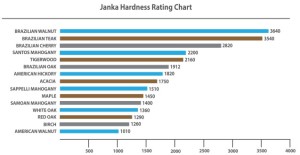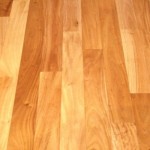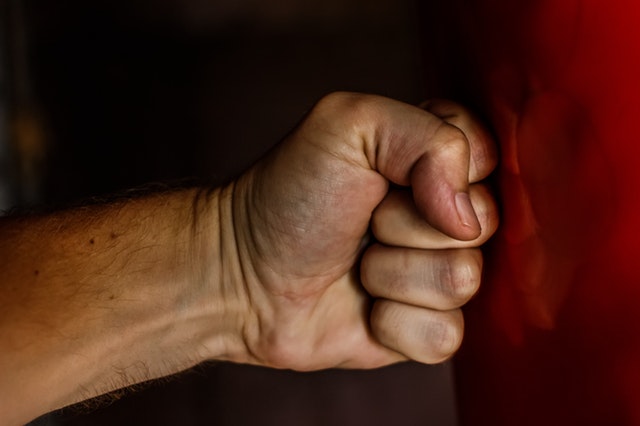Durability is always one of the top concerns for homeowners when choosing the perfect floor. When discussing the durability of a wood floor hardness is the first thing buyers focus on. Although hardness does contribute to the overall durability there are several other factors which contribute to the overall durability. Including but not limited to the sheen, color, and finish.
Keeping these factors in mind while selecting your floor will result with a great looking floor for years to come. Now let’s take a look into how these factors can help contribute to the long-term conditioning.
 Hardness
Hardness
The hardness of different wood species is determined using the Janka Hardness Test. The Janka rating measures the amount of force required to embed a steel ball into hardwood. Janka rating is great for determining the dent resistance between wood species. For example, some of the more popular flooring options that are considered “hard” are Brazilian Walnut (Ipe) and Brazilian Teak (Cumaru). These two species are more than 2 ½ times harder than your common Red Oak. Now that’s a lot of dent resistance!
Finish
Although hardness is great for limiting dents, the finish may be the most important factor when determining durability. The most widely used finishes are polyurethane and oiled finished products. Polyurethane products have the advantage of having an extremely strong top layer, as the finish sits directly on the wood. Many manufacturers are now including aluminum oxide into their polyurethane. Resulting in additional hardness and abrasion-resistant qualities. Oil finished flooring has been around for hundreds of years and has seen a resurgence in the floor covering market in recent years. Oiled floors are different compared to polyurethane floors. When applying an oil finish, the oil penetrates into the pores of the wood and harden to protect the floors while preserving a natural wood grain texture. Oiled floors are generally easier to repair by applying additional oil to the affected area.
Sheen
The sheen level or gloss of a flooring product is often overlooked when determining overall durability. Many homeowners enjoy the pristine appearance of a high gloss hardwood floor. While I agree, a high gloss floor can really give that “wow factor”, it also requires increased maintenance to keep the high sheen looking great. However, many manufacturers are now offering more and more options in lower sheen or matte finishes in both of their polyurethane and oil finished products. A matte finish can help quite a bit at disguising surface scratches or light dents, mainly because less light is transmitted and reflected by the affected area.
 Color
Color
In most cases, the color of the hardwood is chosen to help enhance existing styles in the home. Often homeowners will be concerned with finding the perfect color to contrast their existing walls, cabinets, furniture, etc. The most often overlooked factor is how the color can help hide or camouflage scratches and abrasions. Generally speaking, lighter colored floors will help reduce the chance a scratch on the floor will catch your eye. On top of that, color variation between planks helps the floor appear more active and thus small imperfections do not stand out. Some great examples of species with great color variation would be domestic Hickory or Yellow Birch and some exotic choices would certainly be Acacia and Amendoim.
If you keep these tips in mind when selecting your next hardwood floor, you will be sure to have a long-lasting floor covering for years to come.

